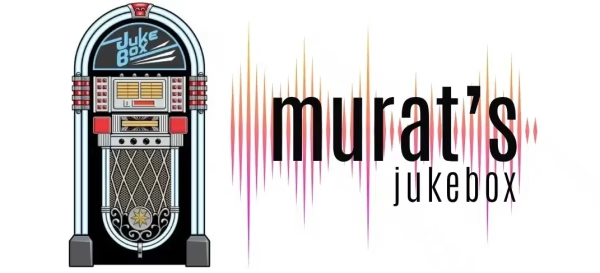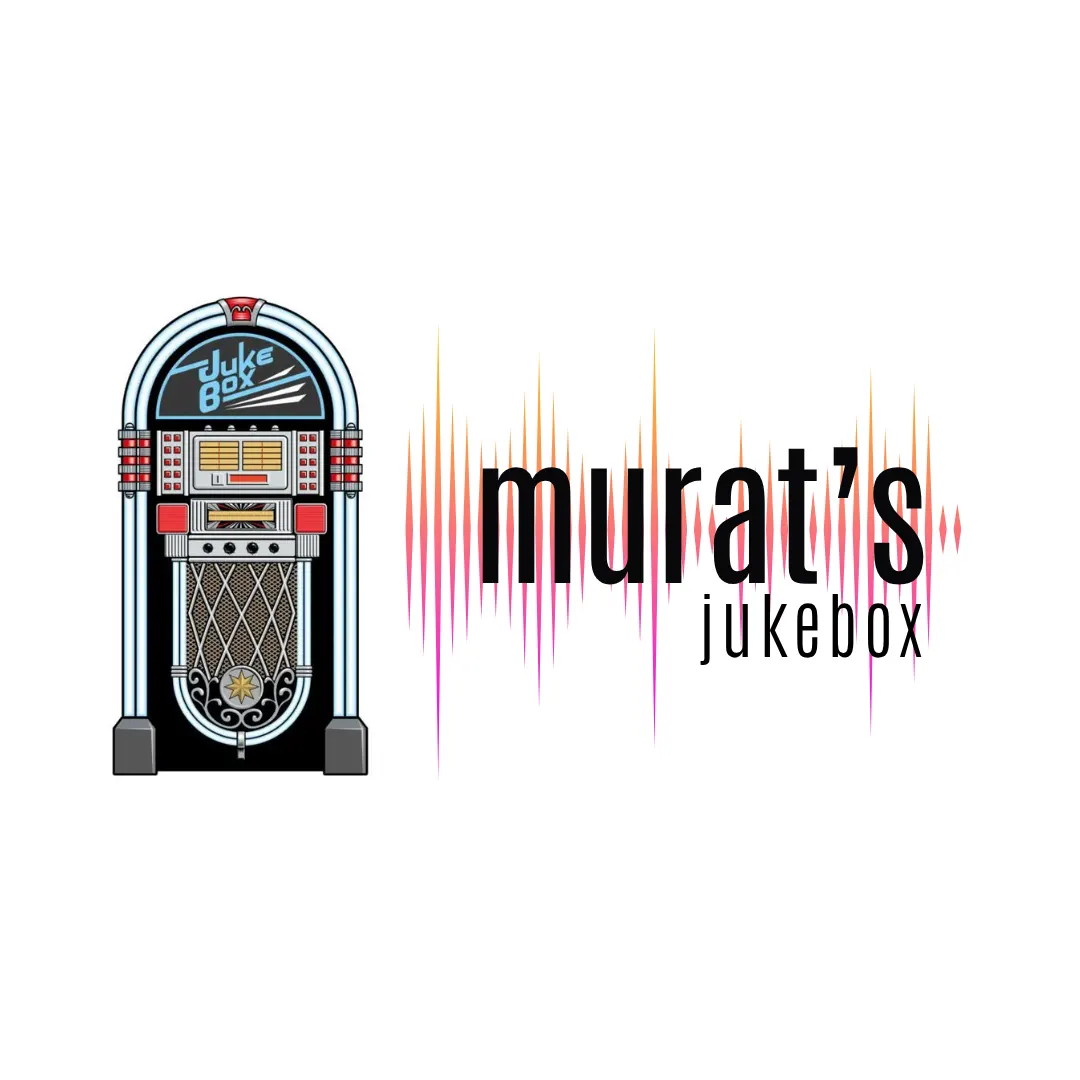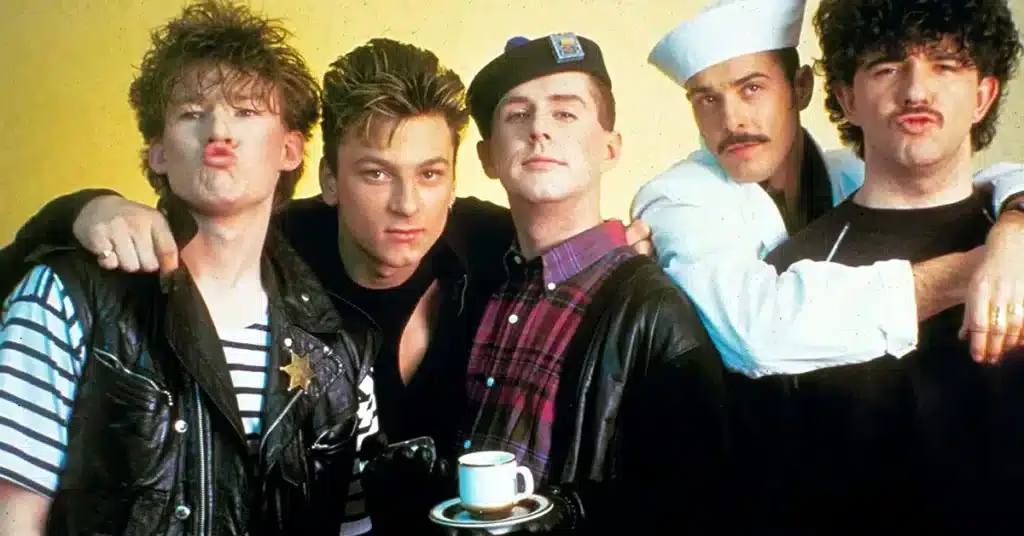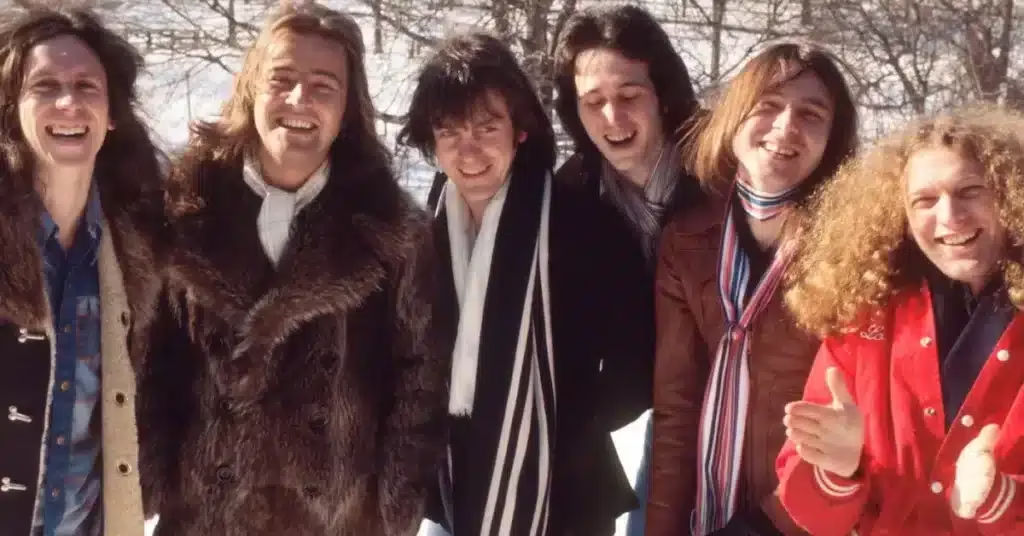Frankie Goes to Hollywood: The Provocateurs of Synthpop and New Wave
Frankie Goes to Hollywood. The Beginning of a Controversial Phenomenon
Frankie Goes to Hollywood (FGTH) formed in Liverpool, England in 1980, emerging from the post-punk scene into the neon-drenched era of synthpop and New Wave. The band was founded by Holly Johnson (vocals), Paul Rutherford (vocals, keyboards), Mark O’Toole (bass), Brian Nash (guitar), and Peter Gill (drums). Their rise to fame was both meteoric and scandalous, turning them into a cultural sensation in the early 1980s.
The band’s provocative image, overt sexuality, and confrontational lyrics made them icons of controversy and symbols of rebellion during the era of Margaret Thatcher’s conservative Britain. They weren’t just a band—they were a media and cultural spectacle.

Frankie Goes to Hollywood. Breakthrough with a Banned Hit: “Relax”
FGTH’s debut single, “Relax,” was released in 1983 and produced by Trevor Horn under the ZTT (Zang Tumb Tuum) label. The track combined thumping electronic beats, suggestive lyrics, and Johnson’s commanding vocals.
The song initially charted slowly until it was banned by the BBC in January 1984 due to its explicit sexual themes—a move that only boosted its popularity. “Relax” became an anthem of sexual liberation and club culture.
Frankie Goes to Hollywood. Highlights of “Relax”:
- Reached No. 1 on the UK Singles Chart, where it stayed for five consecutive weeks.
- Became one of the most commercially successful singles in UK history.
- Its promotional video and lyrical content sparked fierce debates about censorship, sexuality, and freedom of expression.
Welcome to the Pleasuredome (1984): A Monumental Debut
Their debut album, Welcome to the Pleasuredome, released in October 1984, was a double LP extravaganza, blending synthpop, dance, and rock elements. With Trevor Horn’s lush production, the album became a sonic monument of the 1980s.
Frankie Goes to Hollywood. Notable Tracks:
- “Two Tribes” – A politically charged anthem about nuclear war that also hit No. 1 in the UK.
- “The Power of Love” – A dramatic ballad that showcased the band’s melodic depth, reaching No. 1 as well.
- Covers like “Born to Run” (Bruce Springsteen) and “Ferry Cross the Mersey” (Gerry & The Pacemakers) added conceptual flair.
Frankie Goes to Hollywood. Sales & Legacy:
- The album went multi-platinum, selling over 1 million copies in the UK alone.
- FGTH became only the second band in UK history (after Gerry & The Pacemakers) to have their first three singles go to No. 1.

Image, Controversy, and Media Manipulation
Frankie Goes to Hollywood’s impact went beyond music. They were media provocateurs, known for:
- Their “Frankie Say Relax” T-shirts, which became pop culture icons.
- Campy, sexually charged music videos that pushed visual boundaries.
- A promotional strategy from ZTT Records that embraced tabloid scandal, mystique, and control, with Trevor Horn orchestrating much of their sound and image behind the scenes.
FGTH represented the collision of pop music with performance art, challenging conservative norms with homoeroticism, anti-establishment rhetoric, and postmodern style.
Liverpool (1986): The Difficult Sophomore Effort
The band’s second album, Liverpool, was released in 1986, produced once again by Trevor Horn. It shifted toward a more guitar-driven, stadium rock sound, a departure from their electro-heavy debut.
Key Tracks:
- “Rage Hard”
- “Warriors of the Wasteland”
- “Watching the Wildlife”
While the album performed moderately well, it failed to replicate the success of Welcome to the Pleasuredome. Internal tensions, creative disagreements, and a shift in popular music tastes contributed to the band’s disintegration.
Disbandment and Aftermath
By 1987, FGTH had effectively disbanded, though legal disputes dragged on. Holly Johnson pursued a successful solo career, releasing Blast (1989), which featured hits like “Love Train” and “Americanos.”
Paul Rutherford also ventured into solo work, and the rest of the band faded from the spotlight. Johnson later detailed his struggles with HIV and his experiences in the music industry in his autobiography A Bone In My Flute (1994), becoming an important voice for LGBT+ visibility and rights in the UK.
Reunions and Cultural Revival
Despite various partial reunions, including a 2004 Prince’s Trust concert without Johnson, a full FGTH reunion has never materialized. Holly Johnson has consistently declined offers to reunite, though he remains musically active.
The band’s cultural influence, however, remains strong. Their tracks continue to be used in advertising, films, and TV, and “Relax” has become a timeless club anthem. Their mix of pop accessibility, political provocation, and sexual defiance still resonates in modern music and pop culture.
Influence and Legacy
Frankie Goes to Hollywood were:
- Pioneers of synth-driven pop with provocative messaging.
- Among the first mainstream acts to openly challenge societal taboos around sex and politics.
- A key part of the New Wave and second British Invasion in the U.S., even achieving top 10 success on Billboard.
Their music, branding, and scandalous charm paved the way for artists like Pet Shop Boys, Scissor Sisters, and even Lady Gaga, who share their theatricality and defiance.
Discography Summary
Studio Albums:
- Welcome to the Pleasuredome (1984)
- Liverpool (1986)
Selected Singles:
- “Relax” (1983)
- “Two Tribes” (1984)
- “The Power of Love” (1984)
- “Rage Hard” (1986)
- “Warriors of the Wasteland” (1986)






